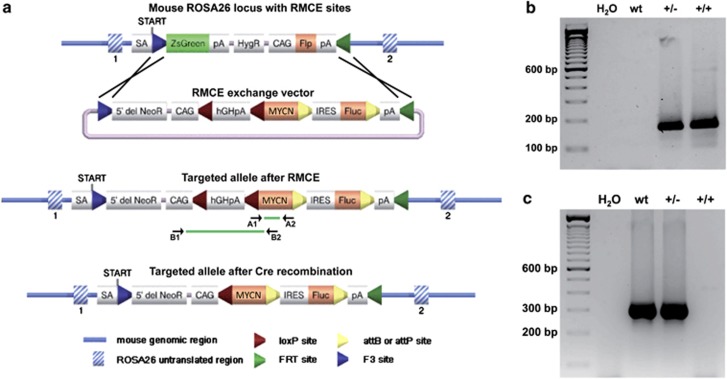Figure 1.
Generation of transgenic LSL-MYCN mice. (a) Graphical representation of the ROSA26 locus with recombinase-mediated cassette exchange (RMCE) sites used to introduce the RMCE exchange vector containing the MYCN transgene. The Rosa26 locus is displayed before (top) and after (center) insertion of MYCN by RMCE, and after cre-recombinase-mediated removal of the transcription termination site 5′ to the MYCN allele (bottom). Localizations of primers used for genotyping (A1 and A2) and the PCR-based validation of floxing out the transcriptional site 5′ of the MYCN allele (B1 and B2) are displayed. Splice acceptor site (SA), polyadenylation signal (pA), internal ribosome entry site (IRES), chicken actin gene promotor (CAG), transcriptional STOP cassette made of the human Growth Hormone polyadenylation signal (hGHpA), human MYCN open reading frame (MYCN). (b) Representative genotyping PCR validating the MYCN knock-in allele in heterozygous and homozygous LSL-MYCN mice (primers used: A1 and A2); wild type (wt), heterozygous LSL-MYCN (+/−), homozygous LSL-MYCN (+/+). (c) Representative PCR validating absence or presence of the transgene inserted into the ROSA26 locus in wt, heterozygous (+/−) and homozygous (+/+) LSL-MYCN mice.

